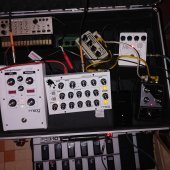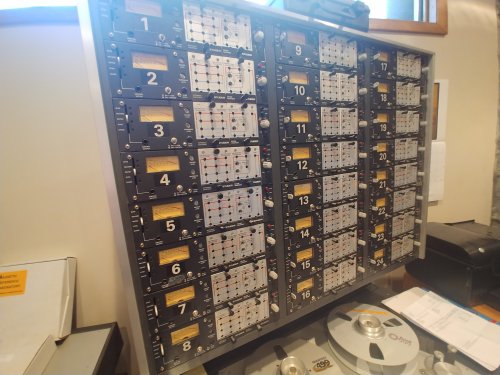-
Posts
1,460 -
Joined
-
Last visited
-
Days Won
1
Everything posted by Gswitz
-

Editing out/cutting out crowd chatter and applause live Recording
Gswitz replied to Kirby H's topic in Cakewalk by BandLab
Video for Kirby. -

Editing out/cutting out crowd chatter and applause live Recording
Gswitz replied to Kirby H's topic in Cakewalk by BandLab
Kirby, if you want me to make you a video, i can. If your happy, I'll let it be. I still have my old tascam 2488. Great company. -
https://www.ebay.com/i/232760609467?chn=ps&ul_ref=https%3A%2F%2Frover.ebay.com%2Frover%2F1%2F711-117182-37290-0%2F2%3Fmpre%3Dhttps%253A%252F%252Fwww.ebay.com%252Fi%252F232760609467%253Fchn%253Dps%26itemid%3D232760609467%26targetid%3D593772196773%26device%3Dm%26adtype%3Dpla%26googleloc%3D9008471%26poi%3D%26campaignid%3D1689945013%26adgroupid%3D69559042287%26rlsatarget%3Dpla-593772196773%26abcId%3D1140466%26merchantid%3D6296724%26gclid%3DCjwKCAjwtYXmBRAOEiwAYsyl3NWVVRIvFSLwjFpVXO8NFoQsuRD8AEY3-OrCKZiCB5uK_LQ8TXZX_BoCsPcQAvD_BwE%26srcrot%3D711-117182-37290-0%26rvr_id%3D1947384895633%26rvr_ts%3D57a733cf16a0ab103203e6c9fff8bb0b I found this on eBay that looks like the same thing.
-

Editing out/cutting out crowd chatter and applause live Recording
Gswitz replied to Kirby H's topic in Cakewalk by BandLab
M key inserts marker. -
Oh and it comes with a studio controller.
-
2 inch tape. 24 inputs. 2 eqs per input.. One for slow one for fast Tape speed. No knobs on the eq... Dunno why.
-

Editing out/cutting out crowd chatter and applause live Recording
Gswitz replied to Kirby H's topic in Cakewalk by BandLab
Just bounce them in place and export. -
Eye contact? ?
-
Side chain is useful for dynamic ducking. Using shelves to cut ranges rather than high pass is also an idea.
-
I think I can almost hear the awesome from the pictures.
-

Follow-Up to My Windows 10 Comments - I Spoke Too Soon!
Gswitz replied to Craig Anderton's topic in Cakewalk by BandLab
This sounds awful. I'm so sorry! -
I'm sorry to hear about it. Sounds scary. Sunsets are better than plugins.
-
Thanks Craig. I hadn't heard of Microsoft Teams until you mentioned it. https://en.wikipedia.org/wiki/Microsoft_Teams Interesting.
-
For years I've posted MP3s to a Microsoft Azure Blobspace. Costs maybe $1-$2 per month if I had to pay for it which I don't because I get it free with an MSDN subscription for work which is like 'please learn to use Microsoft stuff' thing. Anyway, anyone can create one of these accounts and share their music with the internet that way. It's easy and you control it. I did the same for our church because they were asking me how to make their sermons less than 10 MB because that was all they could post to their web site. So I just set up a blob for them and they link to the blob from their website. Next, I get the idea to make an RSS file for their MP3s so they could be submitted to Google Play and iTunes for podcasts. This works. I'm totally surprised. It's not a hard thing to do. Anyway, it occurs to me that we all record a lot of music and it wouldn't be that hard to set one up for the forum. The music we post would have to be original and if we get any copyright claims we'd just pull it. @Bapu, what do you think? For those hopefuls, I don't think there's any money in this. ? It wouldn't be that much different from the songs forum, but when you get in your car to go to work, you'd be able to just bring it up on your car stereo and give it a listen (for those who can listen to podcasts in their car). Right now, I'm thinking I'd be a bottleneck. People would send me their songs and I'd post them (or cut them).
-

How Accurate Are the Resource Monitors?
Gswitz replied to razor7music's topic in Cakewalk by BandLab
-

Cakewalk not recording audio reliably
Gswitz replied to David A. White's topic in Cakewalk by BandLab
Yeah.. +1 on punch. Noel, when punch is engaged and a user hits record and stop a bunch of times without crossing the punch point, perhaps there could be a punch reminder? -
Have you recorded the aux track? The exact amount of the increase seems like the stereo track had been duplicated. If you record the track and then still route through, you end up with exactly double the signal on each channel of the stereo pair which adds to 6db.
-

Happy Easter for Bandlab/Cakewalk squad and all users :)
Gswitz replied to Piotr's topic in Cakewalk by BandLab
I don't think the low shelf reduction is necessary. I listened to the 24 bit waves without it on the way to work. Sometimes the organ drowns the choir but that's what huge organs do. -

Happy Easter for Bandlab/Cakewalk squad and all users :)
Gswitz replied to Piotr's topic in Cakewalk by BandLab
I captured a recording today. https://stpaulsrva.blob.core.windows.net/stpaulsrva/20190421_Easter_Music.mp3 I bounced it fast. I thought the low-end too loud so i cut it by 6db prior to export. I'm not confident about that choice. I used a pair of km184s and a akg c414 one step back from omni. No high pass used during recording. I used mautoalign to align the tracks and mspectral dynamics to compress multiband. -
Too much is never enough.
-
My wife just lost her job. We are celebrating. We'll see some mics. It'll be Ok. Anyone want a km184? ?
-

What are some of your favorite/fun plugins for creativity?
Gswitz replied to Mesh's topic in The Coffee House
I like using midi synths. I have GR3 pickup on my guitar which allows me to layer synths in. Rapture pro is fun. And with a touch screen you can use xy and move between sounds. There is hold pedal on my GR-20 so I can let sounds ring as I mess with the settings... adjust the levels of the synths in console view using a touch screen. Then play some more. God, it's deep. My favorite way to pass hours. Z3ta2 too. ? Reailly... it's an experience. For just playing through the amp, I like Earthquaker Devices mixed with the GR20 and my guitar. That's the next best to Rapture, but it's not as good.






